I ran across this from American Rifleman and thought it was worth a "read"

Browning began developing his .50-cal. machine gun when he was 63 years old. Shown above is an early water-cooled version. His air-cooled model armed every American aircraft in World War II and remains in use today worldwide. Image courtesy of Museums at Union Station.
Anything a person might want to learn about handling a John Moses Browning firearm can be found online. You can learn how to load, fix and shoot one, and you can study how it was used throughout history. From single-shot rifles for hunting elk back in 19th-century Utah to the M2 .50-cal. machine gun used to assault Taliban strongholds in 21st-century Afghanistan, Browning-designed firearms have been there and done that. What you couldn’t learn, until now, though, was how those firearms came to be invented—at least not in the words of the men who actually did the “inventing.”
While John Moses Browning came up with the ideas, the task of translating them into steel prototypes for manufacturers such as Winchester, Colt, and Fabrique Nationale in Belgium was a brotherly endeavor. In previously unknown early 20th century documents, Browning, his brother Matthew and half-brother Jonathan “Ed” describe that creative process in their own words. They allow a first-hand look into how Browning used his extraordinary ability to think in three dimensions to create mechanical systems ranging from tiny pocket pistols for self-defense to five-foot long aerial machine guns.
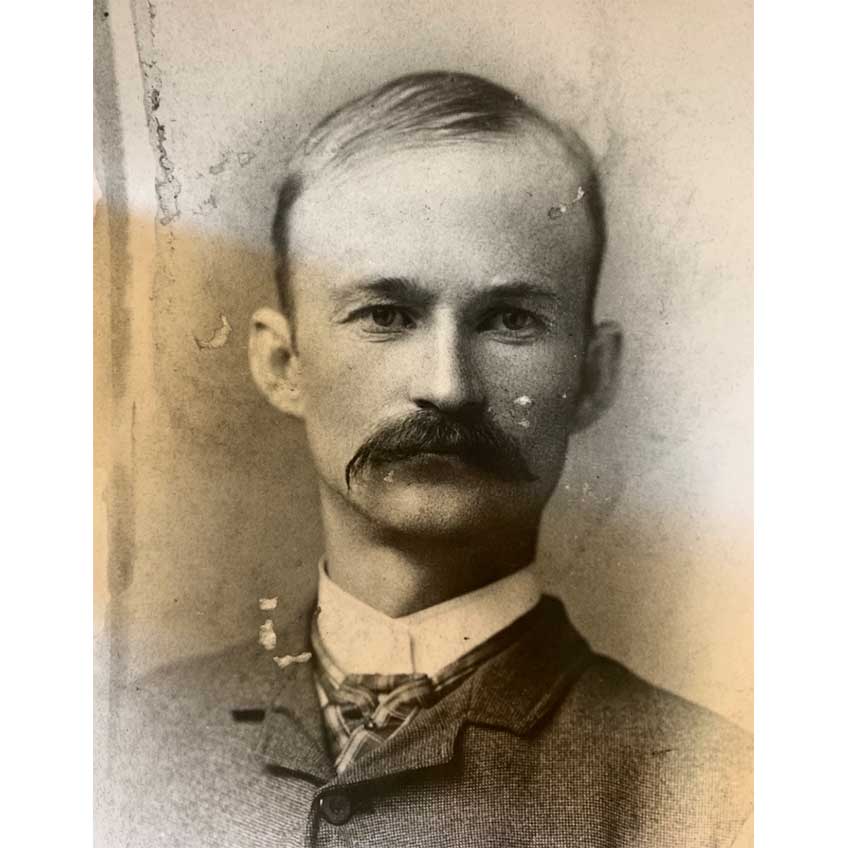
Browning’s impact on American firearm culture and world history can hardly be overstated. His light, accurate and famous Winchester “.30-30” hunting rifle and pump-action shotguns dominated the American market, while in Europe more than 1.25 million Browning pistols were sold between 1899 and 1914. In fact, a Serbian assassin used his Model 1910 to murder Archduke Franz Ferdinand and ignite World War I. Decades later, the RAF fighters that won the Battle of Britain were armed with Browning guns chosen for their remarkable reliability. Indeed, during World War II, every battle Americans fought on land or in the air was fought with Browning's inventions: the 1911 pistol, the Browning Automatic Rifle, his tripod-mounted .30-cal. machine gun and the powerful, long-range M2. Some troops were even armed with a Browning shotgun design dating to 1893.
So how did he do it? To Browning, objects were ideas. He had the unique ability to visualize and manipulate objects in his head, enabling him to go from mind to metal. Remarkably, he never used blueprints. The modern world calls it “spatial thinking,” and we utilize a rudimentary version of that skill when packing a suitcase, as we fold shirts, pants, socks and jackets into shapes that fit the container. Advanced spatial thinking includes “mental rotation,” the ability to imagine three-dimensional objects and rotate them left and right or up or down. And then there is, “spatial realization,” involving “multi-step manipulations” of the objects in your mind.
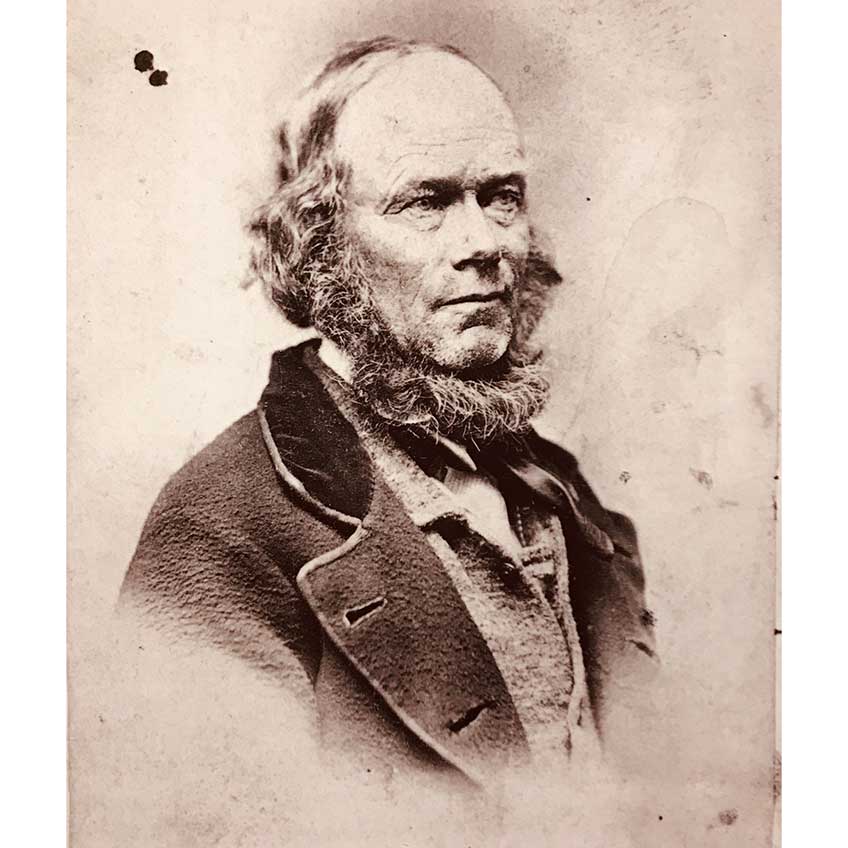
For John Browning, that native skill was amplified by years spent working in the frontier town of Ogden, Utah, under the tutelage of his father, gunsmith Jonathan Browning. In 1865, at age 10, the young inventor built a primitive shotgun out of abandoned gun parts, only to be scolded by his father—not for stealing scarce powder to shoot three wildfowl but for making such a crude weapon.
Thinking through a new firearm mechanism could be a slow process. Granddaughter Judy Jones Browning, whose father was Browning’s youngest son, Val, said that her mother, Ann, watched her father-in-law sit lost in thought during evening visits, tapping his fingers on the side of his bald head, watching mechanisms working in his mind, “until he drove my mother crazy.”
Because none of Browning’s American-made firearms carried his name, the public first encountered him in World War I, when the Army adopted his Browning Automatic Rifle and .30-cal. machine gun. The popular press labeled him the “Thomas Edison” of firearms, though unlike Edison, Browning sought no publicity. He never gave a formal interview, and he kept no diary. After his death, there was no documentation of his work for historians to pore over. Browning left no drawings or blueprints because he never used them. Exactly how a Browning idea became a working firearm had never been fully understood.
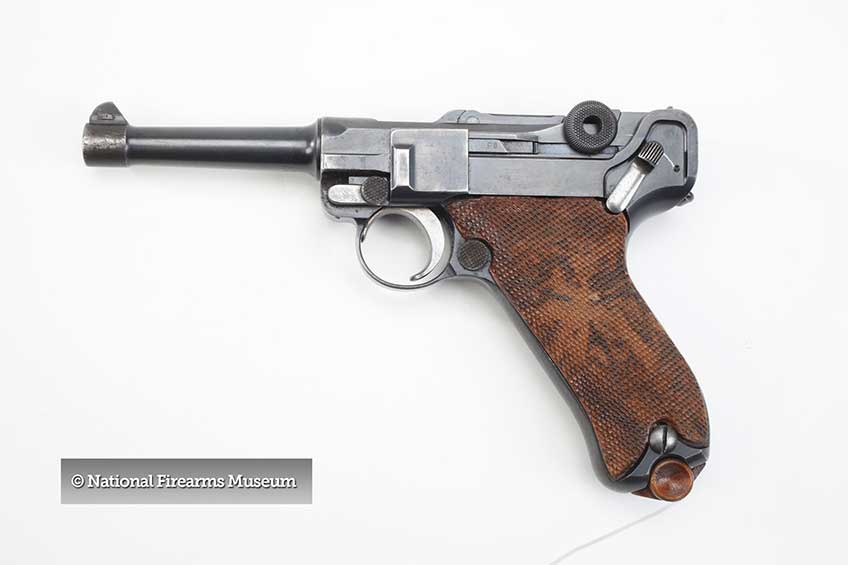
It can be now, thanks to documents from the 1900s when one of Browning’s rare design failures ensnared him a lengthy patent dispute with Georg Luger, who developed the German slant-grip pistol that became the favorite souvenir of World War I doughboys and World War II GIs. The brawl was over a small metal shape that acted like a cam and that Luger used to reduce the size of the gun’s toggle-link action and so turn it into a svelte example of early 20th century engineering. The problem was that Browning had gotten there first and used the same idea in a prototype for an autoloading shotgun—and he had already filed for a patent. Fearing a threat to his pistol sales, Luger declared that Browning stole the idea from him. It was a preposterous claim—as Luger’s attorney all but admitted and as the U.S. Patent office ruled—nevertheless, the result was an eight-year legal brawl that required the Browning brothers to testify, under oath, about how they worked.
Those depositions, combined with newly available letters Browning wrote to his patent attorney, lay out the process. His first step was to design a breech mechanism. “With me, the breech closure is the initial point, everything else is designed to conform to it,” Browning wrote in 1900. What he learned making one firearm was applied to the next, and he went back and forth between projects. While thinking through a new design, he’d make rough sketches in a sort of graphical shorthand. “He can tell what he wants from the sketches, but no one could work from them,” his brother Matt told Luger’s attorney in 1901
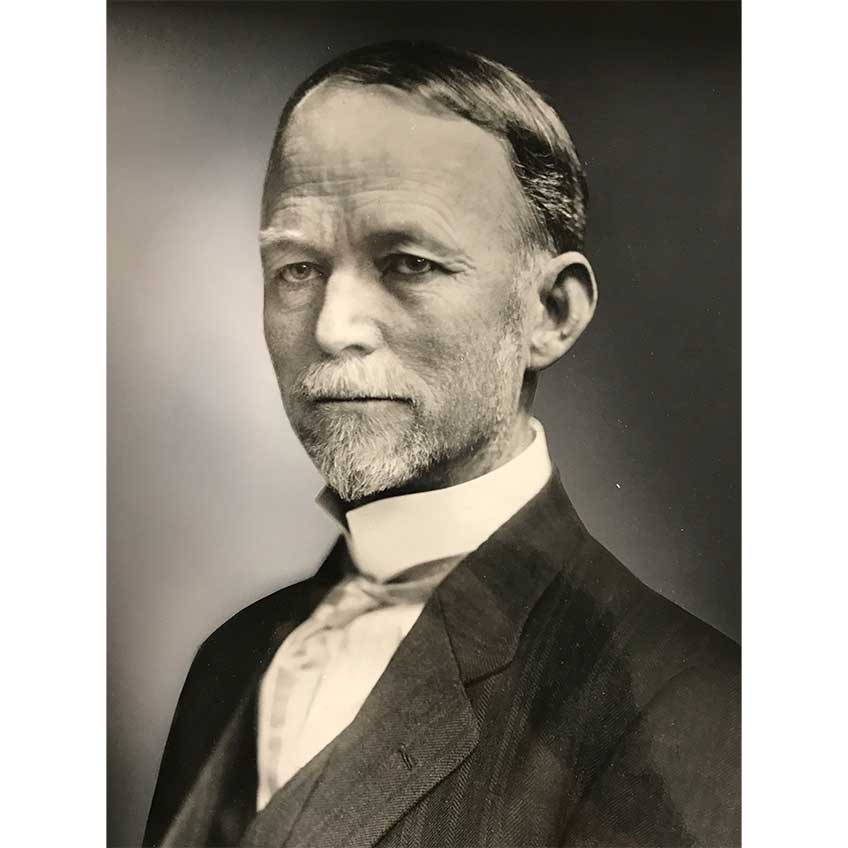
“My brother does not make working drawings,” Matt said, “After he has made sketches and has got the shape of the parts in his mind, he usually makes a templet or plate of steel, the shape of the receiver. Then he drills holes and cuts grooves and rivets pieces on this plate, then makes the breech parts in a skeleton form, so he can see how the breech parts co-act with one another ... he always being present tells how wide to make the cuts and how thick to make the parts.” Note Matthew’s language: Browning “tells” someone how to cut the steel. Who did he tell? Occasionally Matt, but usually their half-brother Ed. “I have done the biggest part of the work, that is, the manual labor on all of them, and construct the models and guns,” Ed said.
Jonathan “Ed” Browning had the same father as John and Matt but a different mother. Their father, Jonathan, was a Mormon with three wives. His second wife, Elizabeth, gave birth to John and Matthew, and his third wife, Ann, was Ed’s mother. Ed left a job at Ogden’s railroad yard in 1879 to join John and Matt’s gunsmithing and sporting-goods business, where he proved himself a talented machinist. By 1887 he—not John Moses Browning—was mostly responsible for churning out the dozens of Browning’s prototypes.
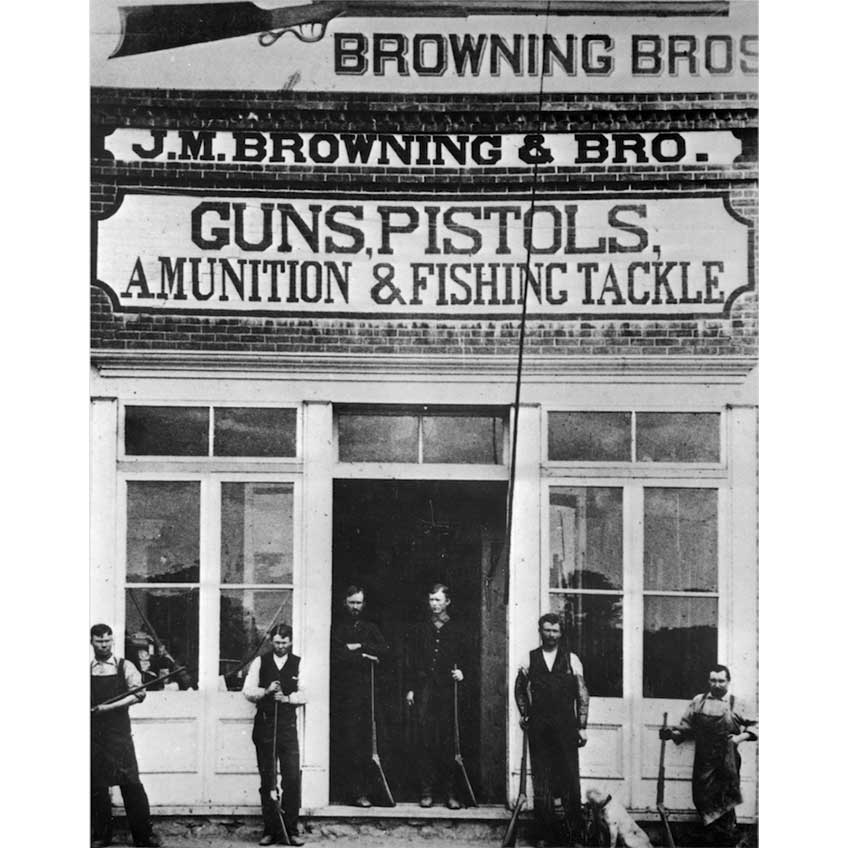
Indeed, as Browning told Luger’s attorney he only “assisted in making the model” shotgun, before adding, “Of course, I invented it.” John literally stood at Ed’s shoulder as he worked, John thinking and Ed making. While Browning had the ideas, Ed’s role likely gave him the opportunity to act as editor to John’s ideas as they were turned into steel.
Indeed, as Browning told Luger’s attorney he only “assisted in making the model” shotgun, before adding, “Of course, I invented it.” John literally stood at Ed’s shoulder as he worked, John thinking and Ed making. While Browning had the ideas, Ed’s role likely gave him the opportunity to act as editor to John’s ideas as they were turned into steel.
“Every cut that we made we discussed whether that is right or not,” Ed said, “and every part is looked at and talked over a great deal … to make it and make it over again may be as high as three times, probably—possibly more than that—before we leave it … to determine whether they are strong enough, whether they are heavy enough, or too heavy, and possibly a part won’t do and we have to throw it away. And once in a while my brother John M. would get stuck, and would have to take some time to get it straightened out.” Ed said he never worked on a John Browning design when the inventor was on one of his lengthy trips to the Colt and Winchester factories or the FN complex in Belgium, but when they bent over a work bench, their minds synced together. An American army officer who worked with John and Ed at the Colt plant in Connecticut confirmed as much in a letter, writing, “Both had told me how the one got an idea and the other put into metal the thoughts of the other.”
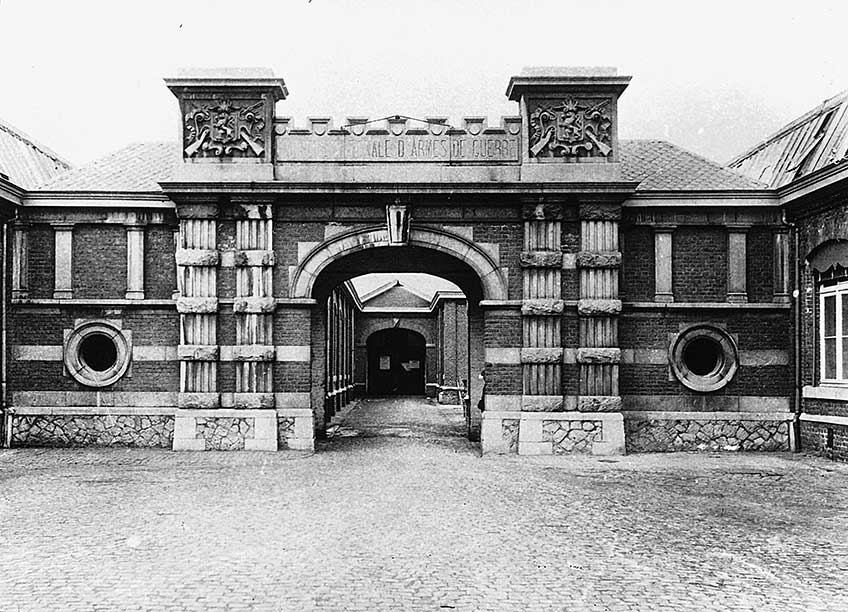
Browning’s own testimony was largely spent refuting Luger’s claims of theft. He dismissed Luger as a one-gun wonder. “In fact, Mr. Luger has not made many inventions, to my knowledge … the pistol is all that I know of Mr. Luger ever having done in the way of inventions and firearms.” In a later court document Browning said the German may have stolen the toggle-link innovation from him. Of course another possibility is that both men, one in America, one in Germany, hit on the idea independently.
Once completed in the fall of 1898, Browning’s five-round, toggle-link shotgun prototype did not sit idle. Financial success allowed Browning to test each step of a design by firing hundreds or thousands of shells while watching and listening for a hiccup or a pause that signaled a faulty part or dimensional error. Friends and shooting partners took the shotgun trap shooting and hunting and remarked on the toggle-link action. On one day, Browning recruited 32-year-old soda pop bottling manager James H. Emmett to help test. “Browning was shooting it, and I was throwing objects for him to shoot at, and I was shooting it and he throwed up for me while I shot it.” Emmett was fascinated. “One of the most forcible (sic) things about it, I know when I got through shooting it the last shot, these here things,” and he pointed to the toggle links, “would stick up in front of your eyes.”
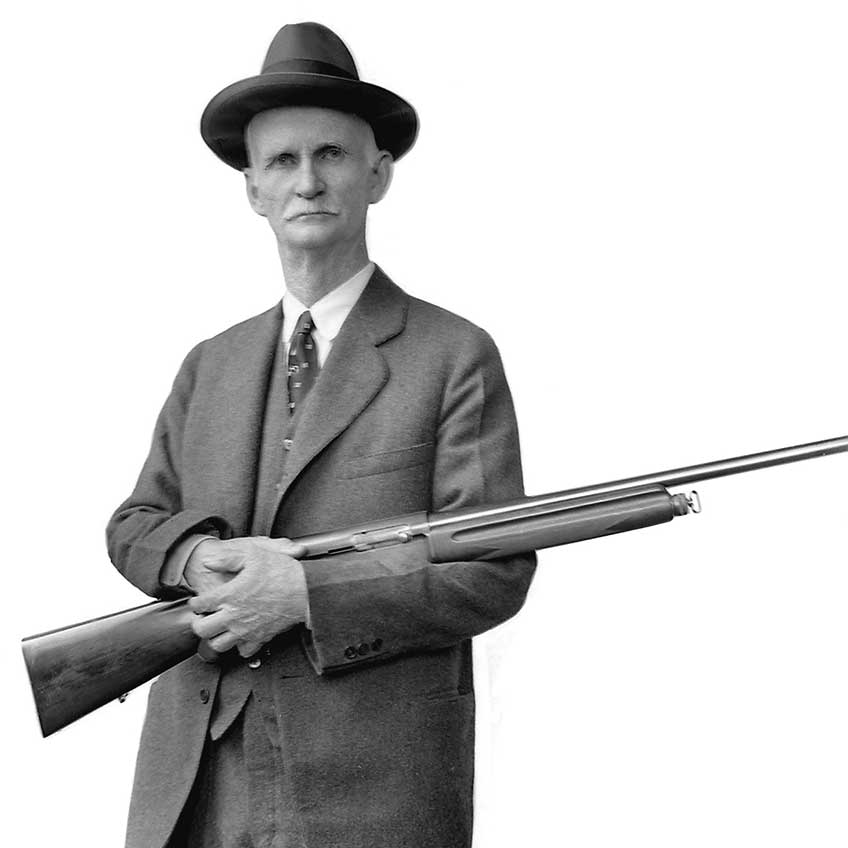
History has shown that the toggle link action was a developmental dead-end. Browning sent his prototype off to Winchester, which found his gun unworkable, and no modern firearm uses the action. Never at a loss for ideas, Browning had, in fact, abandoned the concept while he and Luger were still in court. By 1901, he was completing work on a totally different mechanism for what became known as the Auto-5, the long-recoil autoloading shotgun with the notable "hump." Browning licensed the patent to FN in Belgium after Winchester declined Browning’s financial demands. That rejection has been called the worst decision in Winchester’s history, but exactly why and how that happened has long been misunderstood. Recently uncovered archival documents and letters correct the details of that and other significant events in Browning’s life, including his discovery by Winchester in 1883 and his later association with FN, which began years before the commonly accepted date of 1902. Of what there is no doubt is the success of the Auto-5. It became one of the best-selling hunting and sport shotguns ever produced. Indeed, so many have been made—4 million at least—that a production estimate is guess. As his grandson Bruce W. Browning once wrote, “Production figures on this gun cannot even be estimated … it has been copied by manufacturers in so many countries.”
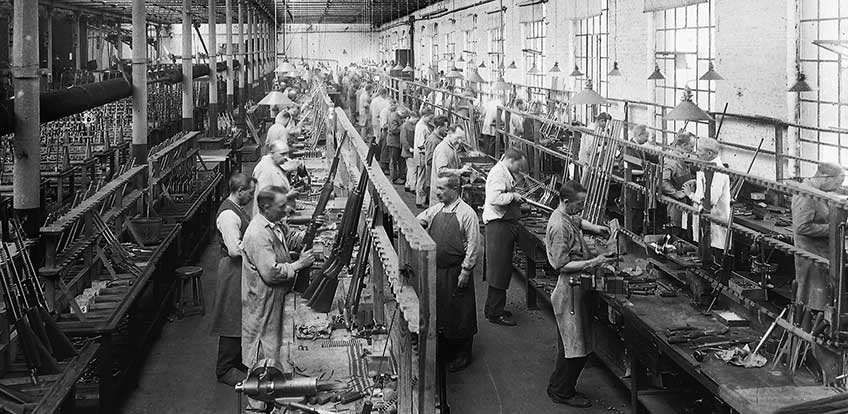
As for the patent dispute, the case produced a mixed result. Browning was initially declared to be the first inventor, and so in 1903, he and Colt sought to halt Luger’s American sales. That case dragged out until in 1908 when a federal appeals court ruled that neither Browning—nor, by extension, Luger—could claim to be idea’s originator, so Luger was free to continue selling his popular gun. Adding insult to injury, Browning and Colt were ordered to reimburse Luger's legal fees. Browning was right about Luger in one respect, however. The German inventor only produced one successful firearm (and that built on the work of Hugo Borchardt.) Browning in the meantime went on to create the Colt 1911, his two famous machine guns, the Woodsman target pistol and the automatic rifle, among other arms.
John Browning went on inventing until his death at the FN plant in 1926. On that final trip to Belgium, he was accompanied for the first time by his wife, Rachel. The day after celebrating Thanksgiving in a Liege apartment with his son Val and daughter-in-law Ann, the inventor walked up the short flight of stairs to the FN offices and soon thereafter suffered a heart attack and died. He laid in state in company’s boardroom, where a plaque honoring the inventor can still be seen.
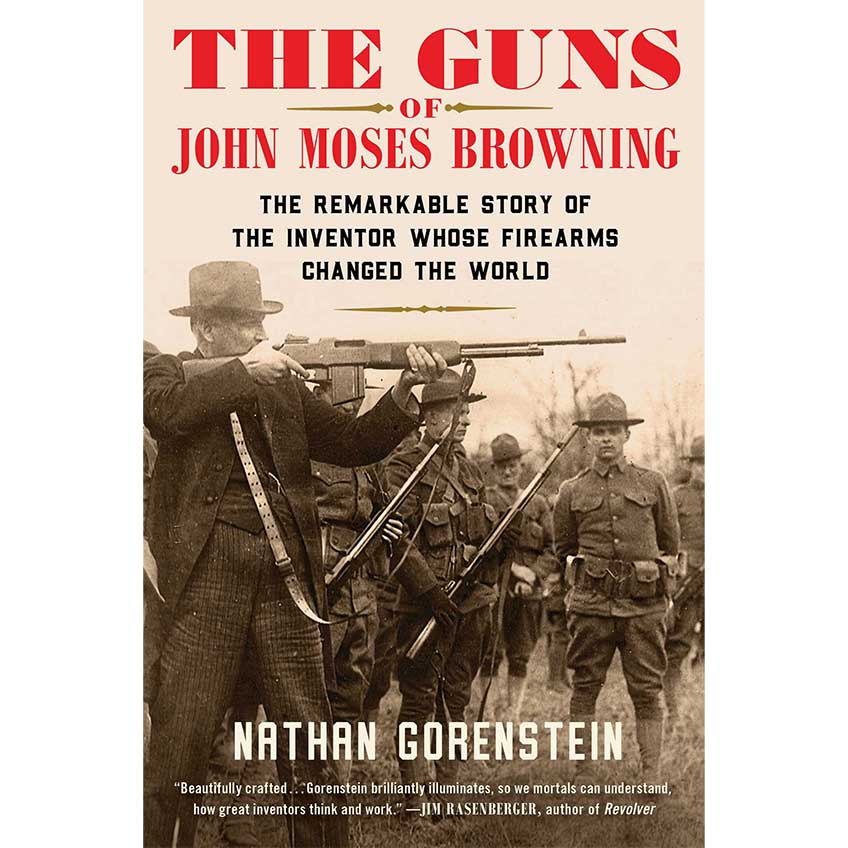
The Guns of John Moses Browning
Scribner Books’ latest offering, “The Guns of John Moses Browning” by Nathan Gorenstein, highlights the story of one of the most influential firearm inventors in history. The new book dives into the background of Browning’s incredible genius, highlighting his self-taught background and his ability to “think in three dimensions” that allowed him to create revolutionary firearm designs without relying on blueprints.
In its 320 pages, the book covers the life of John Moses Browning, from his birth and early years on the American frontier in Ogden, Utah, to his death in November 1926 at his Fabrique Nationale office in Belgium. Along the way, readers are treated to an in-depth look at Browning’s development process, as well as historical anecdotes where Browning’s guns played a role in many of the momentous events of the 20th century.
Gorenstein’s work strikes a balance between accessibility and lavish detail, and the end result is a book that informs those unfamiliar with firearm mechanisms while providing tantalizing details not known to even the most serious firearm enthusiast. The prologue opens with a 19-year-old Gavrilo Princip and accurately describes the operation of his FN 1910 pistol, a Browning design, as he fires the fateful shots that kill Archduke Franz Ferdinand and his wife, Sophie. Another chapter takes readers behind the scenes as Gorenstein reconstructs the development process of Browning’s gas-operated machine gun. You’ll learn about how a single sprig of sweet clover inspired Browning to head back to his shop and start experimenting with his .44-cal. Winchester lever-action rifle. The results of his experimentation would change warfare and the world forever. Toward the end, readers are treated with tantalizing details of the items Browning left following his death, including a .22-cal. target pistol, two semi-automatic shotguns of his own design and a single .22-cal. rifle.
M Browning was a very talented inventor. I have some of his designs or copies at least. He and E G Stoner were wonders of great magnatitude.
ReplyDelete